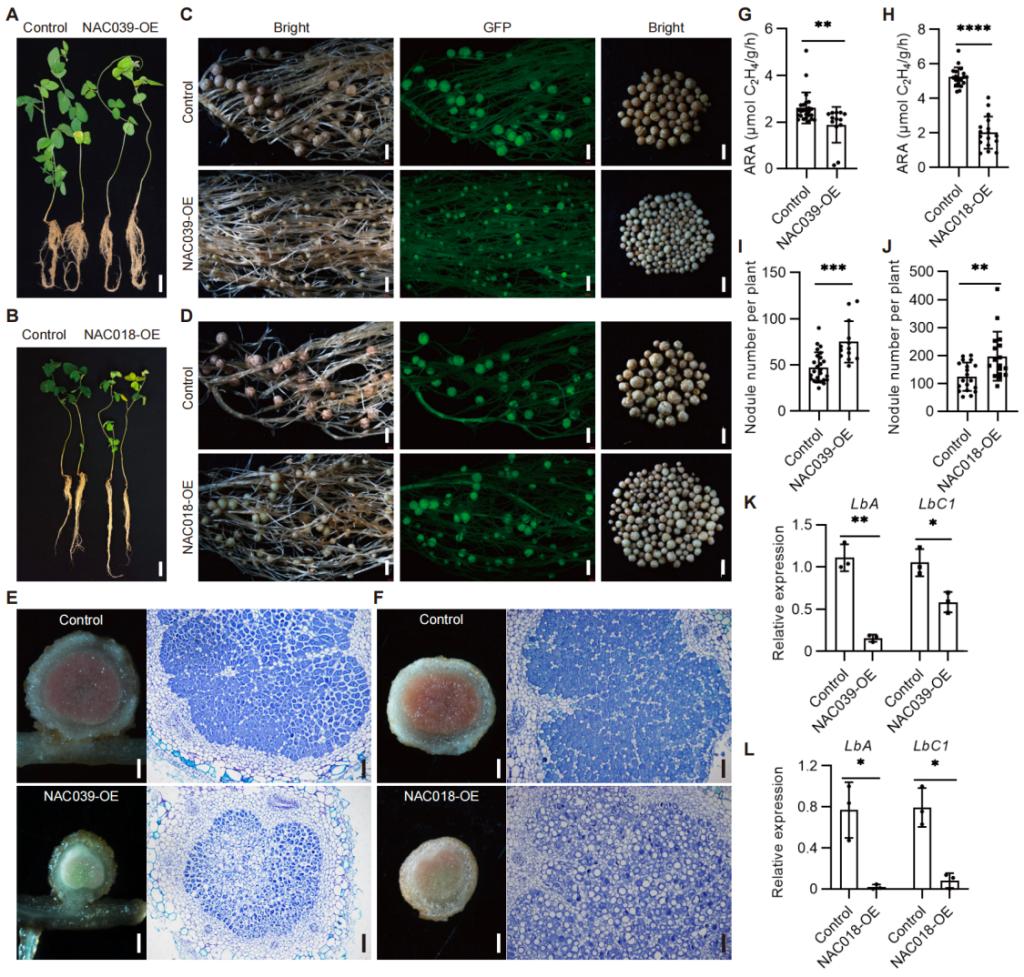GmNAC039 and GmNAC018 activate the expression of cysteine protease genes to promote soybean nodule senescence
Author:Haixiang Yu, Aifang Xiao, Jiashan Wu, Haoxing Li, Yan Duan, Qingshan Chen, Hui Zhu &Yangrong Cao
Plant cell, 2023 May 13, online ahead of print
Abstract:Root nodules are major sources of nitrogen for soybean (Glycine max (L.) Merr.) growth, development, production, and seed quality. Symbiotic nitrogen fixation is time-limited, as the root nodule senesces during the reproductive stage of plant development, specifically during seed development. Nodule senescence is characterized by the induction of senescence-related genes, such as papain-like cysteine proteases (CYPs), which ultimately leads to the degradation of both bacteroids and plant cells. However, how nodule senescence–related genes are activated in soybean is unknown. Here, we identified two paralogous NAC transcription factors, GmNAC039 and GmNAC018, as master regulators of nodule senescence. Overexpression of either gene induced soybean nodule senescence with increased cell death as detected using a TUNEL assay, whereas their knockout delayed senescence and increased nitrogenase activity. Transcriptome analysis and nCUT&Tag-qPCR assays revealed that GmNAC039 directly binds to the core motif CAC(A)A and activates the expression of four GmCYP genes (GmCYP35, GmCYP37, GmCYP39 and GmCYP45). Similar to GmNAC039 and GmNAC018, overexpression or knockout of GmCYP genes in nodules resulted in precocious or delayed senescence, respectively. These data provide essential insights into the regulatory mechanisms of nodule senescence, in which GmNAC039 and GmNAC018 directly activate the expression of GmCYP genes to promote nodule senescence.
Full article:https://doi.org/10.1093/plcell/koad129
